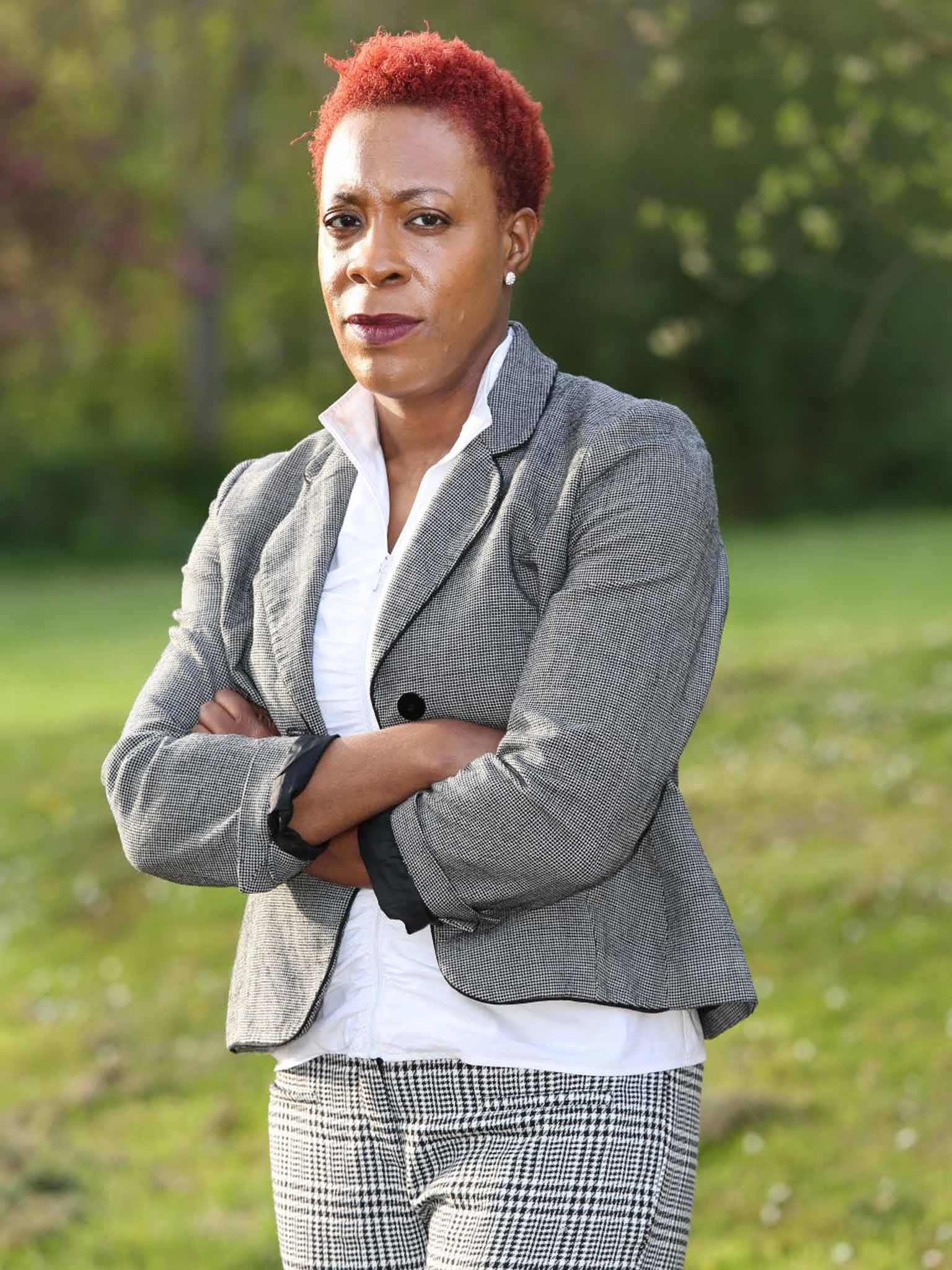Revenge porn: Are the police and courts taking the crime seriously?
Since April this year, sharing explicit images or videos without consent – known as revenge porn – has been illegal. Now, the first perpetrators are being sentenced. But does the new law go far enough? Emily Dugan speaks to victims, legal experts and campaigners to find out

Boy meets girl. Girl dumps boy. Boy bears a grudge. So far, so timeless. But in an era of smartphones, sexting and social media, there is another increasingly common step for jilted lovers: sharing the most compromising images of your ex with the world.
Revenge pornography – circulating sexually explicit photographs or videos without consent – has been illegal in England and Wales since April, carrying a punishment of up to two years in prison. This month, the Crown Prosecution Service released details of the first prosecutions for the new crime, showing the ubiquity of it but also raising questions about how seriously the courts are taking it, with just three of the nine perpetrators sentenced so far sent to prison.
Police are dealing with record numbers of cases, with victims as young as 11 coming forward. Figures for the six months to April this year – when the crime was still being prosecuted using existing laws – show there were 139 revenge porn cases in a sample 14 forces. Ten of the victims were under 16 and two were in their sixties.
There have been plenty of celebrity victims of the practice, too – Kim Kardashian, Rihanna and Paris Hilton have all been subjected to it, perhaps because their fame means that those with a grudge know they can inflict greater humiliation.
The singer Tulisa Contostavlos has described the emotional toll of the crime. In 2012, her ex-boyfriend Justin Edwards released a sex tape of her giving him oral sex at the peak of her fame as an X Factor judge. "I think it was the tape where it all went wrong for me mentally," she said in a BBC interview. "I was like, this isn't what I want to be portrayed as, and afterwards, going back out, it was the thought of facing the audience, the crowd. Even though I was a judge [on X Factor], I was being judged more than the contestants."

The Revenge Porn Helpline has taken more than 1,800 calls relating to 280 individual cases since February when it was launched. It is hard to say if the problem has become more common or if it's simply the impact of publicity for support services and the new law. Last week, Channel 4 screened Revenge Porn, a documentary presented by Anna Richardson. Calls to the Revenge Porn Helpline in the 48 hours after the show surpassed the number usually made over the course of a week.
Jenny Hopkins, the CPS lead for Violence Against Women and Girls and chief prosecutor for the East of England, expects prosecution numbers to grow over the coming months: "The growth of the internet and social media makes it easier for people to commit these offences," she says. "We've had tools to prosecute this in the past, but common sense tells me we are likely to see an increase in the number of reported cases because it's now a specific offence and members of the public will know it's criminal."
Though many argue that there is typically a misogynistic element to the crime, not all cases involve men victimising women. Next month Paige Mitchell, 23, will become the first woman to be sentenced under the new laws, after she posted naked photographs of another woman on Facebook. Mitchell had pleaded guilty to revenge porn and actual bodily harm already at a hearing in Stevenage earlier this month.
Around three-quarters of those calling the Revenge Porn Helpline are women. Of the 25 per cent of calls relating to male victims, approximately 40 per cent are from gay men and around half of all male cases involve bribery, or "sextortion" – threatening to release sexual images as a form of blackmail.
Laura Higgins, who manages the helpline, says: "A lot of emphasis is put on this being a women's issue and a misogynist crime, but men are at the receiving end of this, too. Sometimes it's a man's new partner who finds pictures and wants to get their own back on his ex. Other times, young women fall out; we've seen friendship breakdown where people thought that was a good thing to do. It does turn into quite nasty harassment. Before the law came in we were contacted by a man who'd just had a divorce and his ex was initially writing nasty things about him. He was a teacher and she was making anonymous allegations on blogs and other forums saying that he was having inappropriate relationships with pupils. Then, later on, she posted sexually explicit images of him, too."
Folami Prehaye, from Bristol, was a victim of revenge porn last year and has since set up her own organisation, Victims of Internet Crime (VOIC.org.uk), to provide emotional support to others going through it. She is worried that so few judges are using the full prison sentencing available. "I think giving people suspended sentences is just a slap on the wrist; it's not enough. Since April, they've only put three people in prison. That's not harsh enough, but it's also not sending the right message to the victims that this will be taken seriously.

"What seems to be happening is police services around the country are dealing with this very differently. I've had people say, 'the police aren't believing me' or 'they're not taking it seriously'. Since the law came in in April, I've been contacted by around 25 to 30 victims and many have had problems with the police. Sometimes the case is dropped because there's not enough evidence or they can't track [who has posted the image], which is odd, because you can usually trace people back fairly easily online. I wonder if some of that is simply that those police forces don't know how to deal with it."
Prehaye has first-hand experience of the lasting damage done by revenge porn. After she separated from her partner, Thomas Samuel, he created a fake Facebook profile for her that he used to share explicit images of her with friends, family and strangers. The images, which were taken consensually while they were in a relationship, were viewed more than 50,000 times and, in her own words, the humiliation ruined her life. In September, Samuel was given a six-month suspended sentence over two years for harassment and distributing indecent images, but it could not undo the damage.
Just when it all seemed to be fading into the past, a friend contacted her a couple of weeks ago and told her that a further account – this time a Google Plus profile – had been set up in April last year using the same explicit pictures. She didn't see it at the time. After complaining to Google, it was taken down very quickly, but the discovery – and seeing the images all over again – brought the humiliation back.
Criminal Justice Minister Mike Penning insists that the new law is proving successful: "It is vital that victims have the confidence to report cases and I am pleased to see the law being used effectively in bringing people to justice," he says. "By making it a specific offence, and running a campaign specifically aimed at potential perpetrators, we have sent a clear message that this crime will not be tolerated."
But Prehaye is not alone in raising the issue of a mixed response by police and the judiciary. Laura Higgins of the Revenge Porn Helpline is also concerned by what she sees as lenient sentencing. "We've got mixed emotions [about the law] because the bulk have only got community sentences, fines or suspended sentences. The police response was very poor to begin with. I understand the pressures, but from a victim point of view, most of the time they were telling them it's not that serious compared to what else we deal with. But that seems to be changing.
"We're hopeful that judges will feel more empowered to enforce the legislation. The maximum sentence for revenge porn is up to two years in prison and harassment is up to four years. It's still such a new offence; these are only crimes committed since April. The more complex the offending, the longer it will take to get them to court. Over the next few months I'm hopeful we'll see the cases with longer sentences."
Higgins also believes that the law never went far enough in the first place. "The law misses a few crucial things for victims, such as digitally manipulated images are not included – that would have to be prosecuted as harassment. But if you're in the Muslim community, for example, you find women who wouldn't dream of sexting but someone wants to abuse them so they Photoshop their face on to pornography. That can be so convincing that the effect is really serious."
The police are not oblivious to the regional variation in the way the new law is being policed. Assistant Chief Constable Garry Shewan, the National Police Chiefs' Council lead on stalking and harassment, says: "We have to equip our frontline police officers with the skills to investigate what can be complex crimes… they need to have the basic skills of how to capture IP addresses and other [computer] skills. We have to say clearly to victims: 'Know your rights.' They have a right to have their cases investigated and if the officer doesn't know how to investigate, the victim should tell them to pass it on to experts."
Shewan believes that a lot is already happening to make sure that police are up to speed. "The college of policing has introduced a toolkit to all police officers on how to investigate revenge porn, and it will now be covered in all basic training for the police service." His priority now is making sure that more victims go to the police in the first place.
The intimate nature of the material being distributed has encouraged some unsavoury berating of victims for posing for the images in the first place. Shewan says that a culture of victim-blaming must stop if more of those harmed by the crime are to be encouraged to report it. "We need victims to have the confidence to come forward and know that when they do they will be believed and not judged by the police. In the UK, we have a culture of victim blaming around revenge porn. When you look at debates around it, there's a strong voice from commentators or members of the public that they shouldn't take naked photos or send them. That, to me, is a strong example of victim blaming. People have the right to do what they want in private; it's the fault of the person who breaches that confidence and circulates the pictures, not the person in them."
While the proliferation of camera phones and the internet has made revenge pornography easier, it is not an entirely 21st-century phenomenon. Before smartphones, online pornography and sexting there was Hustler. The US magazine's "Beaver Hunt" section, which featured naked photographs of ordinary women typically sent in by Hustler readers, created ripe ground for revenge pornography before the term had entered the lexicon. The magazine was successfully sued by women in the 1980s whose intimate pictures appeared alongside their names and hobbies after their consent had been faked by the sender.
Not all of the cases coming through the courts in Britain today are hi-tech, either. Luke Brimson, 29, from Bristol was given a six-month suspended prison sentence last month after he printed off and handed out intimate pictures of a woman at a local supermarket.
While it is possible to commit the crime without a smartphone, however, it is the ubiquity of mobiles fitted with cameras and internet browsers that have made the crime soar. Just as photographs can be snapped on a phone before the people in them have time to wonder if they are a good idea, so they can be disseminated in seconds, before the sharer has a chance to ponder their actions.
David Jones from Liverpool posted 12 sexual photographs and a video of an ex-girlfriend online via fake Facebook and Twitter accounts in May. The 53-year-old has long since been married to someone else and his relationship with the victim ended 20 years ago. The old material was gathered years before digital photography, but it was the internet age that allowed him to share it. Jones even published the woman's job, address and details of the school she attended online – and some of the footage ended up on porn sites. Last week he was sentenced to four months in prison.
In a victim personal statement that was read to the court, his former partner described herself as a "very private person". She recalled: "When I found that the images had resurfaced online after all that time, I felt physically sick and had a feeling of complete terror. The whole experience has totally shaken my trust in people and has left me feeling extremely anxious and depressed, and suffering from ill health."
The woman, who wished to remain anonymous, said her life had been permanently altered."Before this, I was always strong and determined, and I never suffered ill-health," she said. "This has left me devastated and will do for years to come."